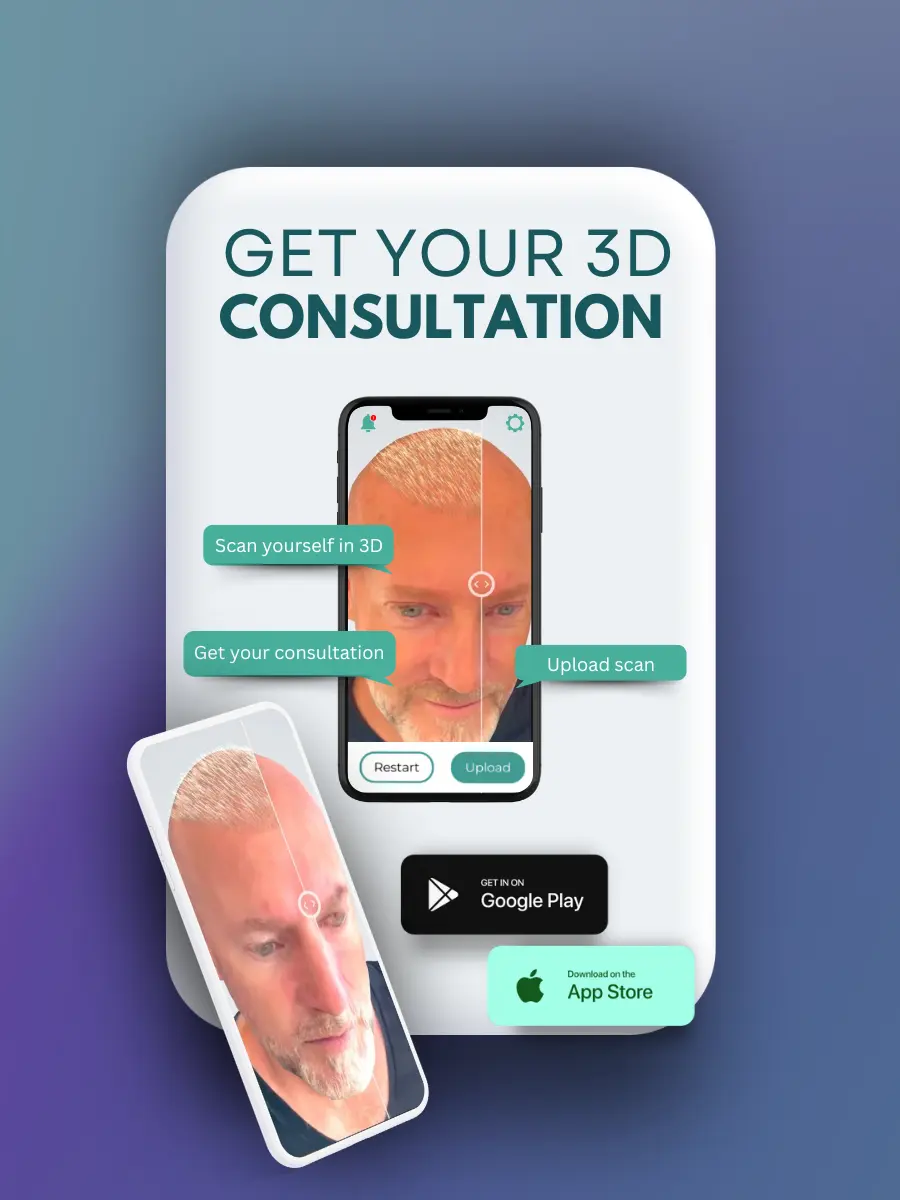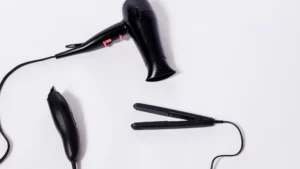Hairline design plays a pivotal role in the success of hair transplants. It is not merely about filling in the gaps but creating a natural and aesthetically pleasing look. The importance of hairline design in achieving natural results cannot be overstated.
My name is Emma Wright, your go-to hair restoration specialist. In this blog, we embark on a journey to unravel the Hairline design that best fits in achieving natural results and some hair growth patterns
This process requires a blend of artistic vision and technical precision to ensure that the new hairline harmonizes with the patient’s facial features, age, and hair growth patterns.
What is Hairline Design
Hairline design is the meticulous process of planning and creating a natural-looking hairline during a hair transplant. It involves considering factors such as facial features, age, and hair growth patterns to ensure the results appear aesthetically pleasing and realistic. This process combines artistic vision with technical precision to achieve a harmonious and natural-looking hairline.

Hairline Design in Achieving Natural Results
Hairline design is crucial in hair transplants, as it ensures natural and aesthetically pleasing results. A well-planned hairline harmonizes with the patient’s facial features, age, and hair growth patterns.
Listed below are some Hairline designs needed to achieve natural and pleasing results during a hair transplant.
Art and Science of Hairline Design: Balancing Aesthetics and Technical Precision
Hairline design is both an art and a science. The art involves understanding facial symmetry, the natural direction of hair growth, and the aesthetic principles that contribute to a natural appearance.
The science involves the technical aspects of the procedure, such as the angle and density of hair placement, the choice of grafts, and the use of advanced technologies.
-
Balancing Aesthetics
Aesthetic considerations are paramount in hairline design. Surgeons must have a keen eye for detail and an understanding of how different hairline shapes can complement various face shapes.
For instance, a more rounded hairline might suit someone with a softer, round face, while a straighter hairline could be more fitting for someone with an angular face. This balance of aesthetics ensures that the hairline looks natural and enhances the patient’s overall appearance.
-
Technical Precision
Technical precision is equally critical. The placement of each hair follicle must mimic the natural growth pattern to achieve a seamless look. Surgeons use specific techniques to ensure that the hair grows in the correct direction and at the appropriate density.
Advanced tools and methods, such as follicular unit extraction (FUE) and follicular unit transplantation (FUT), are employed to harvest and implant hair with minimal damage and maximum success.
Consultation Process: How Doctors Determine the Best Hairline for Each Patient
The consultation process is a crucial step in hairline design. During this phase, the surgeon evaluates the patient’s hair loss, hair type, and facial structure. This comprehensive assessment helps in creating a personalized hairline that meets the patient’s expectations and suits their unique features.
-
Initial Assessment
The initial assessment involves a thorough examination of the patient’s scalp and hair. The surgeon checks the density of the donor area, the extent of hair loss, and the condition of the scalp. This assessment is critical in determining the feasibility of the transplant and planning the design of the hairline.
-
Personalized Plan
Based on the assessment, the surgeon develops a personalized plan for the hairline design. This plan includes the shape of the hairline, the number of grafts needed, and the placement strategy. The surgeon also discusses the patient’s goals and expectations, ensuring that they are realistic and achievable.
-
Patient Involvement
Patient involvement is essential in the consultation process. Surgeons often use digital imaging and simulation tools to show the potential results of different hairline designs. This interactive approach helps patients visualize the outcome and make informed decisions about their treatment.
Common Techniques: Methods Used to Create a Natural-Looking Hairline
Several techniques are used in hairline design to create a natural-looking hairline. These methods focus on the placement, angle, and density of the hair to ensure that the results are indistinguishable from natural hair growth.
-
Follicular Unit Transplantation (FUT)
FUT is a traditional method that involves removing a strip of scalp from the donor area, usually the back of the head. The strip is then divided into individual follicular units, which are implanted into the recipient area. FUT is known for its ability to transplant a large number of grafts in a single session, making it suitable for patients with extensive hair loss.
-
Follicular Unit Extraction (FUE)
FUE is a more modern technique that involves extracting individual hair follicles from the donor area using a specialized tool. These follicles are then implanted into the recipient area. FUE is less invasive than FUT and leaves minimal scarring, making it a popular choice for patients who prefer a quicker recovery and less visible scars.
-
Direct Hair Implantation (DHI)
DHI is an advanced technique that enhances the precision of follicle placement. In this method, hair follicles are extracted and immediately implanted using a specialized tool called a Choi pen. This tool allows for more accurate control over the angle, depth, and direction of each hair, resulting in a more natural look.
-
Combination Techniques
Some surgeons use a combination of techniques to achieve the best results. For instance, they might use FUT to harvest a large number of grafts and FUE to refine the hairline. This approach maximizes the benefits of each technique and provides a comprehensive solution for hair restoration.
Patient Success Stories: Examples of Successful Hairline Designs
Hearing about the experiences of others can be reassuring for those considering a hair transplant. Here are some examples of successful hairline designs that highlight the transformative power of this procedure.
-
John’s Story
John, a 35-year-old software engineer, had been struggling with a receding hairline for several years. His job required frequent client meetings, and his thinning hair affected his confidence. After extensive research, John opted for a hairline design consultation. The surgeon recommended a combination of FUT and FUE to restore his hairline.
Today, John enjoys a natural-looking hairline that has significantly boosted his self-esteem and professional image.
-
Maria’s Journey
Maria, a 42-year-old artist, experienced hair thinning due to hormonal changes. She was concerned about the cost of hair transplant but was determined to regain her youthful appearance.
After discussing her options with a surgeon, Maria decided to proceed with an FUE procedure. The results were outstanding, and Maria now enjoys a fuller, more natural hairline that complements her artistic persona.
-
David’s Experience
David, a 28-year-old teacher, faced early-onset male pattern baldness. He was particularly worried about the stigma associated with hair transplants. However, his surgeon debunked many myths and misconceptions about hair transplants, reassuring David that modern techniques could provide natural results.
David underwent a DHI procedure and now has a well-defined hairline that looks completely natural. His confidence has soared, both in and out of the classroom.
-
Lisa’s Transformation
Lisa, a 30-year-old businesswoman, was conscious of her thinning hairline. She learned about the differences in hairline transplants men vs women and chose a procedure tailored to female hair restoration.
Her surgeon used FUE to create a soft, rounded hairline that enhanced her facial features. Lisa’s new hairline has made her feel more confident and empowered in her professional and personal life.
Conclusion
Hairline design is a critical aspect of hair restoration that requires a personalized approach. The combination of artistic vision and technical expertise ensures that each patient receives a hairline that looks natural and suits their unique characteristics.
Whether through FUT, FUE, DHI, or a combination of techniques, the goal is to create a hairline that enhances the patient’s appearance and boosts their confidence.
Personalized hairline design is not just about restoring hair; it’s about restoring self-esteem and improving the quality of life. With the right surgeon and a tailored approach, patients can achieve remarkable results that feel and look entirely natural.














